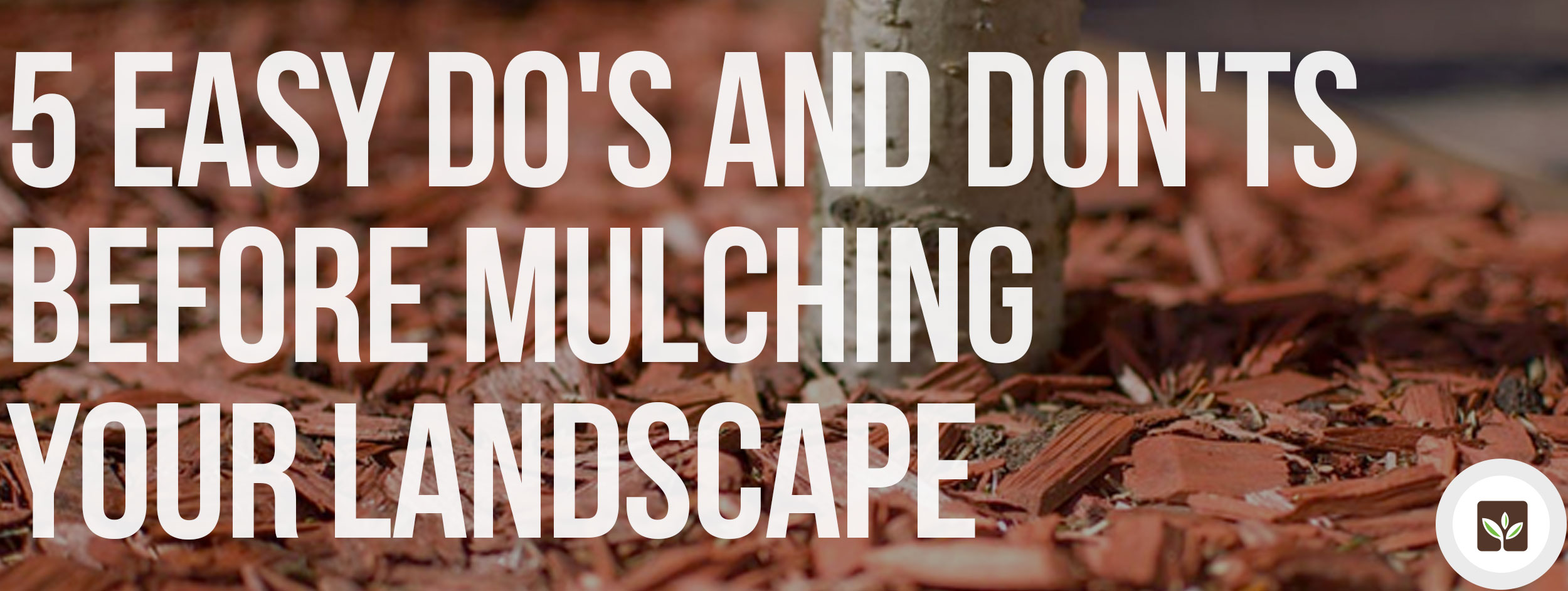
5 Easy Do’s and Don’ts Before Mulching Your Landscape
Mulch is one of the easiest ways to transform your landscape, conserve water, and improve your curb appeal. Mulching is typically very low cost, yet it can deliver a dramatic impact by protecting your plants and even making a rental property more appealing. While it may seem impossible to mess up when mulching your property, there are ways you can go wrong. Here are 5 easy do’s and don’ts to keep in mind when spreading landscape mulch.
Don’t: Make the mulch too thick
In most cases, the mulch should be just 2-4″ thick to retain soil moisture, regulate your ground temperature, and help your plants thrive. At this depth, the mulch helps your plants grow strong and tall even with less water. Playground mulch, on the other hand, should be 6-12″ thick to help prevent injuries.
The worst thing you can do is applying mulch that’s just too thick. Instead of helping your plants, you can starve the plants of water and nutrients. The ground temperature will also increase. This can starve your plants, cause the roots to die, and even contribute to issues like mold in the mulch and insect problems.
Don’t: Forget about your trees
Trees love mulch, too! Mature trees don’t really need mulch unless you want to add a ring of mulch for aesthetic reasons, but young trees can definitely get a lot of benefits from protective mulch. When trees are young, they are vulnerable to root rot and dehydration. Just remember there’s a right and wrong way to mulch a tree. Don’t create a volcano by piling the mulch up against the trunk. This introduces fungus, decay, and pests while suffocating the roots. The best way to mulch your tree is by adding a ring around the base that does not touch the trunk.
Don’t: Use landscape fabric
It may seem like an easy way to prevent weeds but weed blocker fabric is a bad idea unless it’s installed under inorganic mulch like rock to block all plants from growing. Landscape fabric prevents decomposing mulch from amending the soil with beneficial nutrients and it won’t stop weeds from growing on top as the mulch breaks down. It can also be a pain when it’s time to add new plants.
Do: Remove old mulch when you spread a new layer
You don’t need to remove all of your old mulch when it’s time to top it off but it’s a good idea to scoop away some of the old mulch. While organic mulch naturally decomposes, this process takes 1-4 years. If you keep adding new mulch every year, it will build up and may become too thick. This can pull nitrogen from your ground which starves the plants. Do a quick check before topping off your mulch to make sure the depth of 2-4″ is maintained.
Do: Consider professional mulch installation
If you don’t get much joy from the laborious task of spreading mulch, why not call in the pros? You don’t need to hire a crew to do it for you, either. Blown-in mulch is a cost-effective solution to get smooth, flawless results in a fraction of the time and without the costly labor.
With GetMulch.com, you can get mulch installed from a top Georgia based mulch installer in no time.